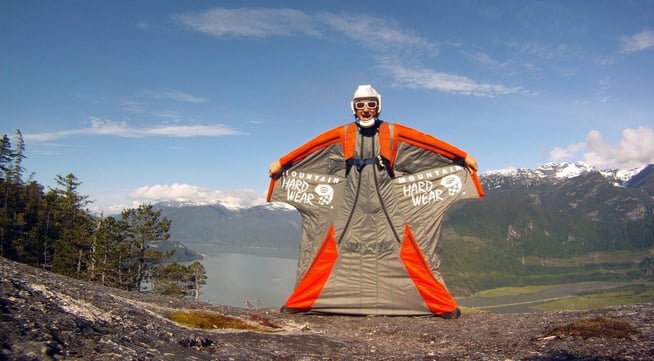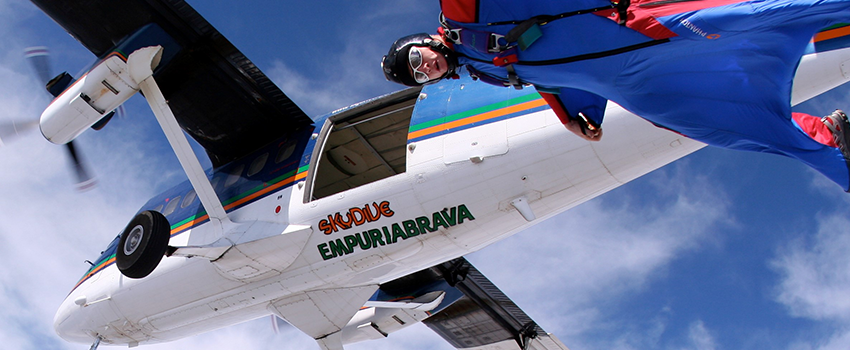There is a level of risk in almost everything we do in life and as such, humans invariably enable conscious and unconscious risk mitigation's in order to complete the actions successfully. In the aviation sector risk is ever present and a number of processes exist in order to mitigate the risks in moving passengers, cargo and airplanes from point A to point B.
The importance of operational risk management can never be underestimated in this industry and identifying and mitigating hazards is at heart of effective risk management. In the world of human flight, BASE jumping, a voluntary yet highly risky adventure sport, also relies upon hazard identification and control implementation to mitigate the inherent risks.
According to statistics, wing-suit BASE jumping is the most dangerous sport in the World. The question is, how can one reduce the risk if participating in this type of activity? One simple answer is, don’t do it! Excluding yourself from wing-suit flying, is a very effective approach. However, for those of us that love this sport exclusion is not an option so as with the aviation industry at large, how we manage these risks is the essence of survival.

Tim prepares for wing-suit BASE jumping by repeated jumps from a plane where he can practice his skills and emergency procedures in an environment of less risk.
What is BASE jumping?
B.A.S.E. is an acronym for Building, Antenna, Span and Earth. Jumping from one of these objects with a parachute carefully packed in a container is termed BASE Jumping. If you add a wing-suit this is wing-suit BASE jumping and the closest that we have come to human flight.
A wing-suit makes it possible to jump off high places and fly your body at speeds of over 120mph. One of the most thrilling aspects of wing-suit BASE is flying close to objects, like cliffs, trees or other mountain terrain. The challenge is the closer you fly to these, the higher the level of risk. Two people doing the same jump can make it more or less risky depending on how they fly. It’s like driving a car, but in 3D, and much faster.
Mitigating the risks - Preparation is key
In preparation for my first wing suit BASE jump and even after doing hundreds of skydives, it was suggested that I did 50 practice jumps out of an airplane, with a wing-suit, before I tried to fly off a cliff.
Jumping out of a plane increases the amount of height and therefore the time you have should a problem occur…and in theory you have longer to correct it. Also, when you jump out of a plane you have two parachutes, so you always have a back-up.
From 10,000ft. I practiced every malfunction I could think of. I corrected each one in good time, so then I tried the same drill jumping from 4000ft, which is a similar height to a large cliff. After about 100 wing-suit skydives I felt ready to jump from a cliff with total confidence.
Whilst the practice was significantly more than many but, for me, was exactly what I personally required to execute my first wing-suit BASE jump perfectly.
Hazard controls - Attention to detail
Packing a skydiving parachute can take as little as eight minutes and there is always a reserve which is packed by a professional.
In contrast a BASE jumping parachute is a single chute and therefore has to be perfect and 100% reliable. As a result, it usually takes me over one hour to pack my BASE rig. Attention to details is crucial.
If it’s not perfect, take the time to make it perfect...otherwise disaster will ensue.
Understand the risks involved - Know your subject
Before I started BASE jumping I read EVERYTHING I could about the sport and absorbed information like a sponge. I wanted to know about every accident, why it happened and what could be done to prevent it. The more I know the more I can take action to reduce the risk. Here the parallel with aviation reporting tallies – incidence reports (i.e. Mandatory Occurrence Reports, Safety Reports and safety controls) provide a database of information from which individuals can both learn of risk and safety issues and also understand how and why wing-suit flight incidences occur.
Most of the incidents are from pilot error. These are some of my mantras:
- Never push it, if it doesn’t feel right it’s probably because it’s not.
- Listen to your ‘gut instinct’ (Some scientist refer to this as your second brain).
Always have a Plan B
Lastly, I have always tried to predict what could go wrong, before it happened. Then I found a solution to this, so I was ready to activate it instantly, if necessary.
Wing-suit BASE jumping is not for everyone and indeed those who take part in this dangerous sport are likely to have a higher risk threshold than most. However, even for those who do enjoy this adrenaline-fueled activity, the understanding and control of risk is an essential element and mandatory in order to control the obvious and less obvious hazards; and of course in order to land safely.
Images by permission of Tim Emmett

